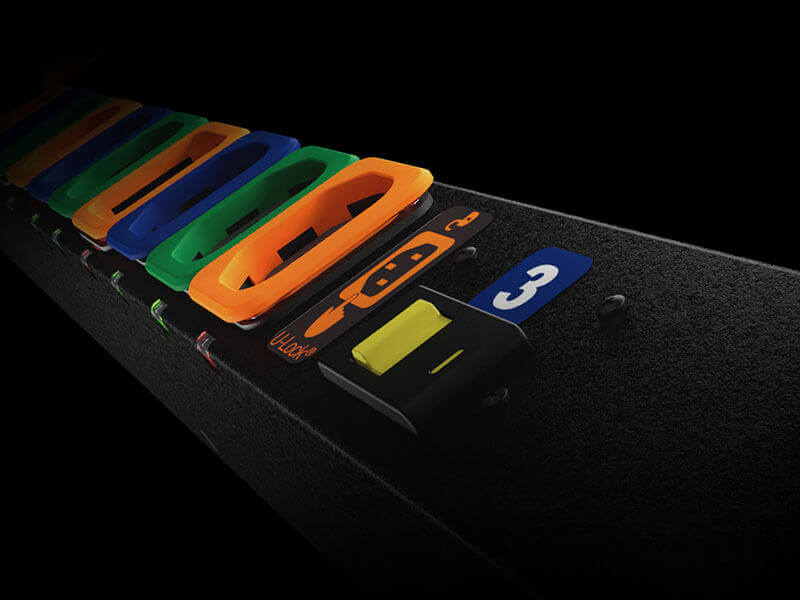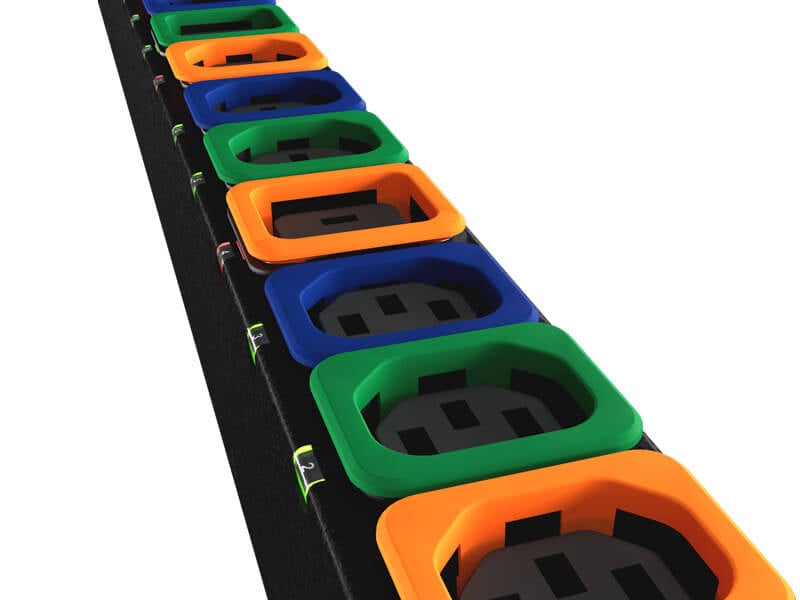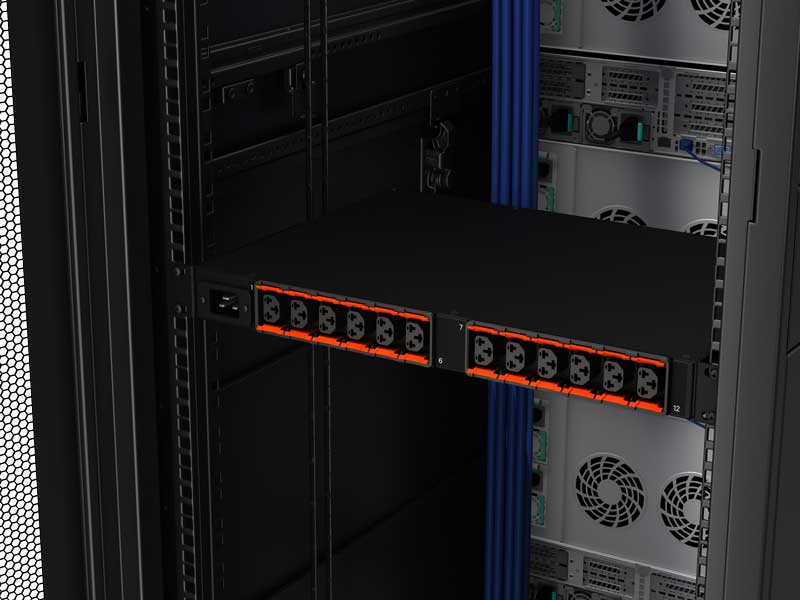At first glance, choosing a Rack Power Distribution Unit (rPDU) might seem like it has little bearing on data center performance.
However, the enormity of this decision becomes apparent upon closer inspection. The specifications of your rack PDU will have a direct influence on reliability, flexibility and scalability of your data center.
Rack PDU selection begins with one very simple question:
What are your power requirements?
When selecting an rPDU, you must determine the power requirements needed for your critical IT equipment.
Typically, you are either limited to the power available or you have the opportunity to select the power configuration to be installed.
If you are limited by your current data center infrastructure, it is as simple as identifying the amperage, voltage, and receptacle type you will be connecting to your rack PDU.
On the other hand, if you can have the power you need delivered to your rack, you will need to do a little math. Calculate the approximate kW needed for the equipment installed or could potentially be installed in each rack. Be sure to consider expected growth needs in your power calculation to ensure you have the flexibility to scale your data center in to the future.
Now that you have answered the most important question, you can move on to the next phase of rack power distribution unit selection: Selecting the type of rPDU that is best for your facility.
There are four types of rack PDUs:
- Basic rack PDU
- Metered rack PDU
- Monitored rack PDU
- Switched rack PDU
Basic rack PDUs: Reliable but Simple
A basic rPDU is as simple as it sounds: a reliable power strip that distributes power to your critical IT infrastructure. They are cost effective entry-level solutions meeting a broad range of requirements to keep your equipment up and running.
Manufacturers provide a variety of features on basic power distribution units to ensure high availability and future proof functionality. For example, you can purchase a basic PDU with locking receptacles to minimize the risk of accidentally unplugging equipment. Additionally, some manufactures offer upgradeable models designed to add intelligence, if business needs change.
Generally speaking though, the basic rPDU does not provide any insight into equipment power usage and can not be accessed over the network.
This option is ideal for small server rooms that are in close proximity to your IT staff, though wouldn’t be recommended for larger, mission-critical server rooms or data centers, given their inability to be monitored or managed remotely.
Metered rack PDUs: A Step Above Basic
Metered rPDUs provide the same reliable power distribution as basic rPDUs but provide users with local power consumption data via a local display. The local display provides key power utilization metrics (current, voltage, power factor, etc.) to give users insight into equipment power usage for future adds, moves, and changes.
Some metered rack PDUs are available with enhanced features such as a visible light communication (VLC) allowing users to scan the digital display using a mobile application to gather valuable data to help with capacity planning and electrical load balancing.
Just like with the basic rPDU, some manufactures offer upgradeable metered power distribution units to provide flexibility to add remote monitoring without removing power from the connected devices.
Metered rPDUs are recommended for use in highly secure data center environments that must keep their power infrastructure air-gapped from the local network or for facilities that foresee an eventual need for remote monitoring.
Monitored rack PDUs: Intelligence that Travels
Monitored rPDUs provide all the same features and functionality of the basic and metered power distribution units with the extra bonus of remote monitoring over the network.
Users are able to remotely access real-time power consumption metrics – down to the outlet – via a secure web interface so data center staff can monitor critical power utilization metrics in real time, regardless of their location. This continuous flow of information is useful in several key ways:
- Automatic alerts can be triggered the second a user-defined threshold is exceeded.
- Power usage can be tracked with much greater precision, improving billing accuracy.
- Load balancing is more precise, limiting the amount of stranded power without risking shorts.
- Environmental monitoring can be added to monitor critical environmental conditions.
To get the most out of your monitored rPDU, identify a manufacturer that offers fault-tolerant daisy chaining to ensure that data continues to be reported even when a break in the network chain occurs.
Another key feature to consider is IP aggregation. If the cost of networking hundreds of rack PDUs causes stress, manufactures provide built-in software features that allow up to 50 rPDUs to be monitored from a single IP address with self-configuration of downstream devices significantly reducing deployment time.
Monitored rack PDUs are highly recommended for high-density data centers, especially large colocation facilities that are not conducive to manual power usage reports for billing purposes, and for cloud providers needing to support fluctuating power loads without compromising energy efficiency.
Switched rack PDUs: As Intelligent as Intelligent Gets
Switched rPDUs represent the modern zenith of data center power distribution. They provide all of the same features and functionality as the monitored rack PDUs, with one key exception: they can be remotely managed.
Authorized data center personnel can turn on, turn off, or reboot unresponsive equipment remotely through an intuitive web interface. They can also limit power usage at the outlet to avoid accidental overloads. This provides users with ultimate control over their data center power usage, efficiency, and availability.
Switched rPDUs are highly recommended for any IT deployment whether that be a large-scale data center or a small remote location. They are especially valuable for users needing a quick and easy way to remotely reboot critical equipment by significantly reducing or eliminating the cost of deploying technicians to simply power cycle unresponsive servers or network gear.
Once the power requirements have been determined and the rPDU type has been identified, there is one last step needed to choose the perfect rack power distribution unit.
Configuration and Outlet Needs
Rack power distribution units are mounted horizontally or vertically and inside or outside the rack. Horizontal rPDUs are installed inside the rack and take up valuable U space. Typically, horizontal units take up 1U or 2U of rack space and have 8-16 outlets. Vertical-mounted rPDUs can have up to 54 outlets. These are installed at the back or side of the rack enclosure, so these do not take up critical equipment-mounting space inside the rack. Understanding your data center space and IT equipment before selecting the mounting option, receptacle type, and quantity for the rPDU can help save cost, time, and space.
Check out what Vertiv Geist has to offer here or find your perfect rPDU in the PDU Finder.






